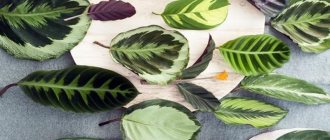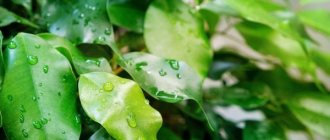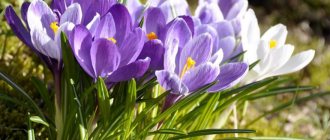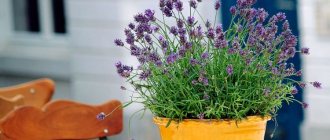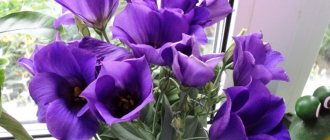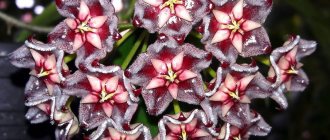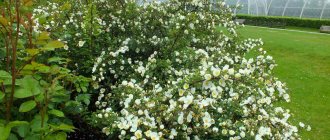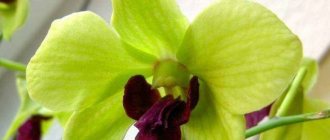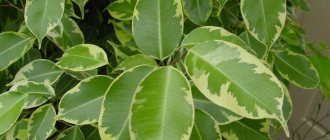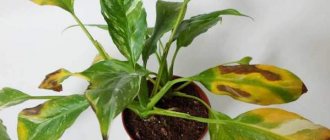What kind of plant is this and where does it grow?
Gerbera is a herbaceous flowering plant characterized by a short stem and a rosette of light green leaves at developed roots. Impressive peduncles rise up from the rosette; they are slightly pubescent. Later, very exquisite single inflorescences of the most unexpected colors appear on them.
Interesting fact! Unknown flowers were first noticed in South Africa in 1717 by the Dutch scientist J. Gronovius.
The homeland of the houseplant (at least, most of the species) is Madagascar and southern Africa. Some species can be found in Asia. Gerbera belongs to the genus of perennial herbs, the Asteraceae or Compositae family.
The flowers of the plant are shaped like the blooms of Osteospermum, Nivyanik and other “daisies”. The color can be any, but not blue. Flowers are collected in “baskets”. The diameter of the flowers is 4-15 cm, there are varieties with a diameter of up to 30 cm. The flowering time reaches 3-4 months.
The fruit is an achene. There are up to 500 seeds in 1 gram. Their viability lasts up to six months. The weight of one seed is about 0.002 g. The flower stalks reach a height of 0.6 m; they have no leaves.
The rhizome of the plant is well developed and quite strong.
The leaves are pinnate, dissected, narrow, the ends are pointed, and grow up to 35 cm in length. They are collected in basal rosettes. The bases and petioles of some varieties are quite pubescent.
Common diseases and pests
Fungal diseases (powdery mildew, root rot). They occur mainly due to excessive watering. The gerbera fades and the stems turn black. A white or grayish coating may appear on the leaves, they turn yellow and curl (you can find out why gerbera leaves turn yellow and how to treat it here). Systemic fungicides are used. If the soil mixture emits an unpleasant odor, you should immediately replant the yellow gerbera.- Damage by aphids . The leaves turn yellow and small black spots are visible on the underside. If spotted early, pests can be eradicated manually. At a later stage, chemicals are used against aphids.
- Spider mite . The gerbera seems to dry out, as small cobwebs draw all the juice out of it. In this case, you need to humidify the air around the gerbera and use insecticides (Anti-mite). A decoction of tomato tops, infusions of wormwood, and Persian chamomile are also recommended.
- Whitefly infestation . These are small caterpillars that eat holes in leaves. Spray with preparations containing peremethrin.
- Shield . This is a pest and can be seen on the underside of leaves as brownish scales. At an early stage it is destroyed manually, at a later stage - with chemicals.
- Mosaic . The gerbera weakens, sharply defined light spots appear. At an early stage, spray with Bordeaux mixture. An advanced disease cannot be treated.
You can read more about gerbera diseases here.
Watch the video showing an example of a disease on a plant:
Decorative varieties for growing in pots
There are about 80 varieties of the plant. In indoor conditions, compact varieties of Jameson's gerbera most often take root. The key distinguishing feature is the low peduncle, up to 30 cm. There are also forms of classic green-leaved gerbera that are more suitable for the garden, as well as Gerbera Wright, Abyssinian, Ferruginea DC, etc.
Plant varieties are distinguished by beautiful flower shapes. They all resemble daisies, but they are double, simple, needle-shaped, with curling petals. And the variety of colors is simply amazing.
White, orange, yellow and red flowers are not a complete list of gerbera colors.
Note! For home breeding, the Festival variety would be an ideal option. It is he who manifests himself as profitably as possible, because... has a stunning appearance. Shortened peduncles are combined with expressive and large flowers.
In addition, varieties Happipot, Hummingbird, Parade, and Ilios are popular for growing in pots. And the famous Durora Mix variety boasts compact dimensions, large semi-double flowers and unpretentiousness. A few more varieties:
- Golden Serena has flowers with a diameter of 12 cm.
- Harley - with flowers up to 7 cm.
- Brigadoon Red will delight you with double flowers.
Types and varieties
If you've ever seen a photo of a gerbera, you know that this plant can be very diverse. In total, more than 80 species are known, each of which has unique characteristics. The basis for most hybrid varieties are two varieties:
- Gerbera common, or green-leaved. It can be recognized by its jagged leaves, large delicate pink inflorescences, and narrow petals around it.
- Gerbera Jameson is a perennial with a short stem and a lush rosette of basal leaves. The inflorescences externally resemble large daisies, the diameter of which ranges from 4 to 15 cm.
The most popular hybrid varieties are the following varieties:
- Festival is a plant with large double flowers and short peduncles.
- Jupiter is characterized by very narrow petals.
- Alcor is a crop with small flowers and narrow foliage.
- Mars is a variety with large baskets, lush foliage and tall stems.
This is what the most common varieties of gerberas look like.
Photo
You can see in the photo what the flowers, stems and leaves of different varieties of plants look like.
What do gerbera flowers look like?
Gerbera is one of the most recognizable flowers after roses, lilies and tulips. This plant was introduced into cultivation in the nineteenth century: the first variety that gave rise to all cultivated varieties was Jameson's gerbera. This is a rather large perennial herbaceous plant belonging to the Asteraceae, or Asteraceae, family.
You've probably noticed bright baskets in bouquets, reminiscent of the sun or multi-colored daisies - most likely it was a guest from Madagascar. Characteristic external features are a thick long stem, dark green oblong leaves collected in a basal rosette and inflorescences of rich colors in the shape of baskets, reaching a diameter of 10 cm.
Gerbera in a bouquet or in a pot is a beautiful, symbolic and even useful gift
The structure of inflorescences, mistakenly taken for one flower, is not as simple as it seems at first glance. The fact is that the “basket” is not just one flower. It consists of petals, which are full-fledged, independent flowers, arranged in several rows. There are varieties with both regular inflorescences and double ones, more like asters. The core is also formed by many independent small tubular flowers with a variety of colors.
Depending on the properties of the inflorescences, all varieties are divided into six large groups. The shape of the petals (narrow, wide), the size of the inflorescence itself and the “doubleness” are taken into account. Each of the varieties grown today is a product resulting from work with Madagascar Jameson and green-leaved daisies; There are also hybrid types. Below are descriptions of the most popular varieties of gerbera in various shades in floriculture.
We also recommend reading:
16 most popular indoor plants Physalis: description of species and varieties, technology for growing from seeds Spruce in landscape design: the best ornamental varieties and characteristics of cultivation Kalanchoe: description of types and characteristics of care at home
Caring for an indoor flower
At home
- To grow the plant at home, you will need a breathable clay pot. The soil you need is slightly acidic: sand, peat and leaf soil in a ratio of 1:1:2.
- Watering is moderate, so that the soil does not dry out. The water should be soft, room temperature. Water along the edges of the pot so as not to get on the root rosettes. You can also pour water into the tray for 30 minutes. Stagnant water can cause rot. The plant likes to be sprayed, but not on the flowers.
- Dry air is detrimental to gerberas.
- The plant is light-loving, and the duration of flowering depends on the daylight hours, so a place with bright but diffused light is suitable. Regular ventilation of the room is also important.
- You will need to feed the flower 3-4 times a month with mineral complex fertilizer. Organic will not work.
- During the flowering period, the optimal temperature will be 16-24 degrees Celsius. In winter – 12-14. Gerberas are replanted if necessary in early spring.
In the garden
The planting location is required to be illuminated by the sun for most of the day. The soil needs to be fertilized with inorganic fertilizers. In this case, the flower stalks will not stretch and will retain their size and color.- During the growth period, the flower is watered abundantly, and after flowering - moderately, but the roots should not be allowed to dry out. Water should not get on the sheets or into the socket.
- The plant should be fed with mineral fertilizers every 2 weeks until autumn.
There is a variety of garden gerbera, which you can learn about in this material.
Description
This plant is a herbaceous perennial. The height of the stems during the flowering period varies between 25-60 cm. The leaf rosette is located very low, almost close to the ground, and the leaves grow on short petioles. The central part is slightly elongated. The shape is pinnately dissected. The leaves reach 35 cm in length. Their surface is bare and leathery, sometimes you can see soft pile on it. The color is dark green, rich, monochromatic.
The flowering period lasts from August to November. The peduncle grows up to 80 cm. A large basket is formed at its top, the size of which is on average 14-15 cm, sometimes 30. If the flower is too heavy, the plant leans to the side. The color of the petals is very diverse: from white to lilac and burgundy. In the center of the bush there are small tubular flowers of a dark brown or yellow hue. They retain an attractive appearance for 3-4 months.
Difficulties and illnesses
Gerberas may not bloom in the following cases:
- If there is excess or lack of light. The flower does not tolerate direct sun, which causes burns, but deprivation of its light has a detrimental effect.
- Touching sockets when watering.
- Not enough space in the pot.
- Transplanting into a too large pot after a small one. It takes a long time to adapt.
In general, the plant is resistant to diseases and pests, but diseases still occur. The key reason is improper watering.
Recommendation! If you overwater a flower, the lower leaves and roots will rot. This causes rot and viral diseases.
Dangerous fungal diseases include:
- gray rot;
- powdery mildew.
Improper watering also causes fusarium and late blight.
Dry air also causes the death and appearance of spider mites. It can only be removed with fungicides.
The key condition for the absence of diseases is proper watering and maintaining air humidity . If this is violated, problems with the plant appear.
When planted in open ground, flowers sometimes suffer from aphids.
Pest and disease control
The main pests for gerbera are the same as for other flowering plants. Modern insecticides do an excellent job of controlling aphids, scale insects, mites and whiteflies. At home, such problems almost never arise, especially if you thoroughly disinfect the substrate before planting in the oven or with potassium permanganate.
If the leaves fade and seem to burn out, it is most likely due to too intense lighting. Try to move the gerbera away from direct sunlight. The second reason for the pale and sickly appearance of a flower is the adaptation period if it was just purchased or transported to a new place.
If the bush deteriorates and begins to obviously rot, this is due to an excess of moisture or poor soil ventilation. The problem is that when the symptoms are already clearly visible, it is almost impossible to save the flower. Be sure to inspect your gerbera regularly, reduce watering in winter and do not use too cold water.
Photo: stridetail.ru
Reproduction
Gerberas reproduce in several ways:
- Seeds . The germination period reaches 30 days. From the moment of sowing to the appearance of the first flowers, up to 11 months pass.
- Dividing bushes . This method is used to propagate very valuable varieties. Only three- or four-year-old gerberas are suitable for division;
- By cuttings.
IMPORTANT! Sowing of seeds is carried out in the spring in leaf soil with the addition of sand and turf. Seeds need to be sprinkled with 5 mm of soil. After the formation of 3-4 leaves, young gerberas are cropped into separate pots.
When dividing a bush, it is worth leaving 2-3 growth points on each separated plant. Such a plant also begins to bloom no earlier than after 10-11 months. This method is more suitable for valuable varieties, because... When sowing seeds, the color may vary significantly.
To propagate the cuttings in April-May, the mother bush with an earthen lump is removed, and the rosette is washed and cut off. The rhizome is planted in a greenhouse in loose soil at a temperature of 22-25 degrees. The cut is located 5 cm above the ground. After 7-10 days, young sprouts appear from dormant buds in the sinuses.
The flowers of this plant are so attractive that today their production is on an industrial scale. Despite the fact that gerberas are very heat-loving, and in many countries they grow only in greenhouses, the plant occupies a leading position in the number of flowers sold each year. This popularity can easily be explained by the many qualities that make the plant suitable for growing as a cut flower.
In a greenhouse with the necessary conditions, gerberas bloom without interruption from early spring to late autumn.
Landing Features
It is very important to know how to care for gerberas. If you grow the crop at home, then special attention should be paid to the soil and pot. In order for the flowers to delight you with their beauty and be healthy, you need to purchase a clay or ceramic pot of sufficient volume. The diameter must be at least 15 cm.
When preparing your soil, make sure it contains iron, along with other beneficial minerals. The soil should be slightly acidic, loose and nutritious. Also, purchase drainage.
Pink and red gerberas
Red is the color of love and passion, and gerberas with petals in shades of scarlet and pink are extremely popular and suitable as a gift for both women and men.
Green-leaved (common) gerbera
The ancestor of most bred varieties. It is distinguished by a soft pink hue of narrow-leaved inflorescences and long serrated leaves. Height – up to 1 meter.
Gerbera mini Robin Hood
A double variety with a small but very impressive double inflorescence of a rich dark red hue. The core is usually black, with a yellowish frame. The variety is highly valued by breeders.
Gerbera mini Robin Hood
Gerbera Opium
An incredibly spectacular variety with scarlet petals in several layers. Refers to semi-double gerberas - the top layer of petals is shorter than the rest. The core is small, yellowish in color. Opium looks great in bouquets with white flowers.
Gerbera Pink Fantasy
As the name suggests, the shade of the inflorescences is pink (“Pink” - English). The petals form three rows, the core is framed by small bright pink shoots, and it itself is black, which makes the variety stand out from the rest.
